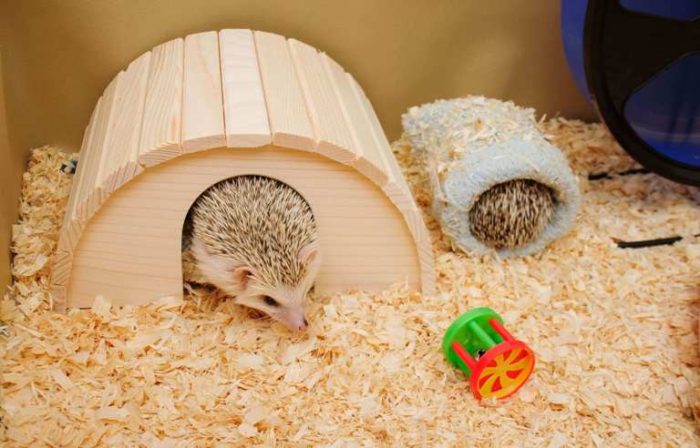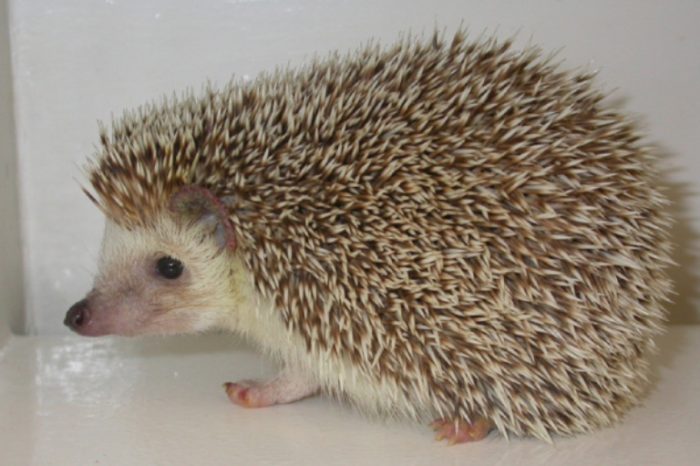Hedgehogs can make very unique pets that keep you company for years, but pet parents have to familiarize themselves with the basic needs of these spiny creatures. For one, their basic care requirements are similar to that of guinea pigs and rats. On building an enclosure for your pet hog, there are a plethora of hedgehog bedding options to choose from. However, pet parents should be aware of what material to use and what not to use. The reason for this is that some beddings like cedar shavings are known to be toxic to hedgehogs and when used, can lead to a lot of health issues.
Table of Contents
The Natural Solution
People who have seen the feral hedgehog gathering up its nestling materials in the wild would know that the animal goes for mid-sized leaves that came from deciduous trees like hornbeam, oak, lime, or beech. These leaves are what appear to best stick together to form the walls of the hedgehog’s nest. They are also good in trapping air between the layers; this makes for excellent insulation. The feral hedgehog also makes use of other materials such as straw, dry grass, and other plant materials.
If your surrounding is suffused with these sorts of materials, then, your garden hogs will happily gather the much needed to set up their nest. People whose gardens lack such nestling materials can move into the countryside on foraging trips to gather them up and make them available for their garden hogs.
Opposed to the natural solution, hog parents can purchase some bedding for their pet hedgehogs
The Best Hedgehog Bedding To Buy
Pet parents who are looking to purchase beddings for their hedgehog house should go for materials that are as close to the animal’s natural/normal nestling/bedding materials as possible.
Hay
Hay is one of the most common hog beddings to choose from and it comes with a plethora of options;
- Long strands – The long-stranded hay will be more easily “woven” into a nest by your spiny friend.
- Dust extracted/double dust extracted – Dry grass is not particularly associated with dust. However, it can become dusty after being harvested and turned into hay. The dust, if not extracted, can result in breathing problems and irritation for pets if used for bedding. For this reason, the dust must be completely filtered and extracted for it to be safe for small creatures like the hedgehog.
Straw Options For Hedgehog Bedding
Another good option for hedgehog bedding is straw. Naturally, feral hedgehog collects a lot of straw for their bedding materials, thus, it is a good option to consider. Some pet parents have expressed concerns about their hog’s eyes getting poked by the strap ends of the straws. However, these fears have come to naught; even though hogs are known to be short-sighted, they are experts at navigating through sharp brambles and hedges in the dark and have come off unharmed.
Thus, a little bit of straw is not likely to bother them. Pet parents who favor straw should be sure to go for the softest option – Barley straw. Remember, they have to be completely dust-free, just like hay.
Fabric Bedding Options

Since hedgehogs love to hide, it might be good to buy stuff like pillowcases, fleece, and towels to use as their beddings. Fabrics don’t just absorb wetness, you can reuse them after washing and they can be obtained in any pattern or color. With fabric bedding, handling your spiny friend becomes easier and safer because they provide some form of protection against its prickly spines.
Some Benefits Of Fabric-based Bedding
- Reusable
- Easily cleaned
- Keeps the cold out
- Prevents cage items from falling over or slipping, thus, everything is kept in check
- It can be used for tunnels and pouches where the hedgehog can burrow into when it wants to sleep or rest
Corn Cob Bedding
Corn cob bedding has some advantages, for one, it is cheap and is good at absorbing wetness. However, it won’t stop the odor from coming and is less soft in comparison to other beddings. Besides, you have to keep a close watch to know when the mold will start developing. Thus, it is not the best option to use as hedgehog bedding.
Wood Shavings
Hog parents who would prefer to use wood shavings should ensure that they get their materials from woods considered safe for the hedgehog and are completely devoid of toxic oils or substances. Though wood shavings appear a bit too harsh and lack the kind of comfort fabric-based bedding would offer a pet hog, many pet parents advocate this form of bedding because it is more natural for the spiky creatures to burrow in and experience a semblance of life in the wild. Wood shavings are good in keeping the odor out and like the straw and hay; it must be dust-free.
Other materials that can make fine beddings for your spiny friend are newspaper, shredded paper, or recycled pellets. For the newspaper, you can use them to line the floor of the hedgehog’s house and easily remove them when wet. All these are absorbable materials that can be used without any issues.
No matter the type of bedding you chose in the end, all should be subjected to thorough cleaning and properly processed so as to eliminate the risk of harmful parasites like mites and others.
Read Also: Guinea Pig Sneezing: Causes And What You Need To Know
Materials To Be Avoided In Your Hedgehog Bedding
Cedar Shavings
The internet is suffused with warnings about using cedar shavings for birds, reptiles, and other pet animals. According to the records, cedar shavings should be completely avoided as they contain the toxin known as Plicatic Acid in addition to other volatile and aromatic hydrocarbon or phenol compounds. The scent of cedar shavings comes from these phenols and it is also what aids them in repelling moths and fleas, however, the same compounds are responsible for several issues in small mammals.
Disadvantages Of Using Cedar Shavings For Hedgehog Bedding
Cedar shavings may be very cheap and ubiquitous, but the disadvantages far outweigh the benefits.
- It can lead to some types of cancer
- It may engender respiratory illnesses
- Your little pet may end up with a liver problem
- They can give rise to allergies
Other bad bedding choices include
- Gravel – this can be rather too painful on their feet.
- Sawdust – sawdust is known to cause some breathing problems.
- Dusty hay – apart from the dust that can cause breathing issues, it is believed that pygmy hedgehogs can easily get their feet entangled in straw and hay which can lead to injuries, this may end up in amputation.
- Dusty straw – same with dusty hay.
- Pine shavings – these are considered toxic to a hedgehog.
- Soil – The soil can harbor something nasty to your spiny friend and the same goes for leaves.
